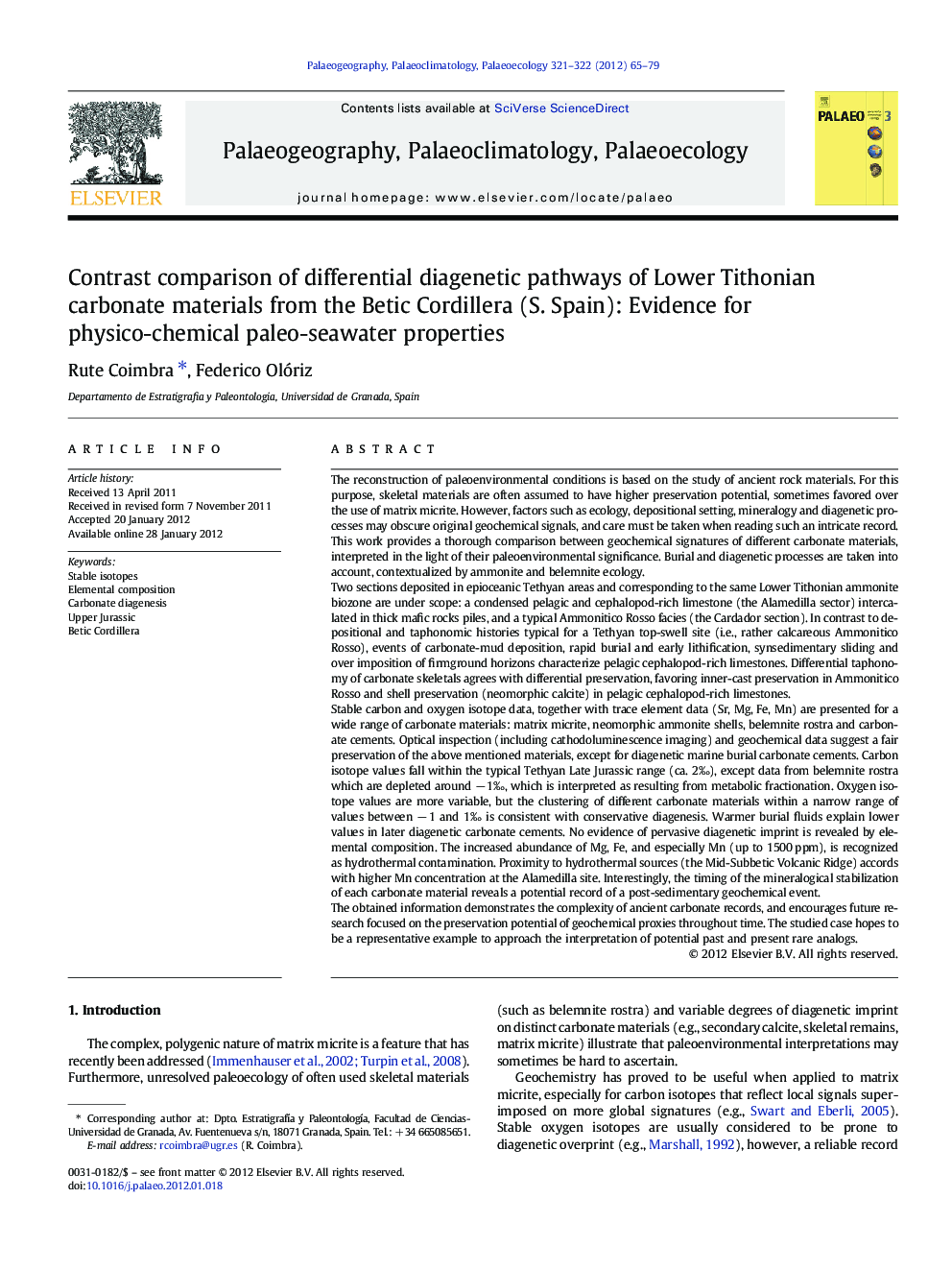| کد مقاله | کد نشریه | سال انتشار | مقاله انگلیسی | نسخه تمام متن |
|---|---|---|---|---|
| 4466997 | 1622238 | 2012 | 15 صفحه PDF | دانلود رایگان |

The reconstruction of paleoenvironmental conditions is based on the study of ancient rock materials. For this purpose, skeletal materials are often assumed to have higher preservation potential, sometimes favored over the use of matrix micrite. However, factors such as ecology, depositional setting, mineralogy and diagenetic processes may obscure original geochemical signals, and care must be taken when reading such an intricate record. This work provides a thorough comparison between geochemical signatures of different carbonate materials, interpreted in the light of their paleoenvironmental significance. Burial and diagenetic processes are taken into account, contextualized by ammonite and belemnite ecology.Two sections deposited in epioceanic Tethyan areas and corresponding to the same Lower Tithonian ammonite biozone are under scope: a condensed pelagic and cephalopod-rich limestone (the Alamedilla sector) intercalated in thick mafic rocks piles, and a typical Ammonitico Rosso facies (the Cardador section). In contrast to depositional and taphonomic histories typical for a Tethyan top-swell site (i.e., rather calcareous Ammonitico Rosso), events of carbonate-mud deposition, rapid burial and early lithification, synsedimentary sliding and over imposition of firmground horizons characterize pelagic cephalopod-rich limestones. Differential taphonomy of carbonate skeletals agrees with differential preservation, favoring inner-cast preservation in Ammonitico Rosso and shell preservation (neomorphic calcite) in pelagic cephalopod-rich limestones.Stable carbon and oxygen isotope data, together with trace element data (Sr, Mg, Fe, Mn) are presented for a wide range of carbonate materials: matrix micrite, neomorphic ammonite shells, belemnite rostra and carbonate cements. Optical inspection (including cathodoluminescence imaging) and geochemical data suggest a fair preservation of the above mentioned materials, except for diagenetic marine burial carbonate cements. Carbon isotope values fall within the typical Tethyan Late Jurassic range (ca. 2‰), except data from belemnite rostra which are depleted around − 1‰, which is interpreted as resulting from metabolic fractionation. Oxygen isotope values are more variable, but the clustering of different carbonate materials within a narrow range of values between − 1 and 1‰ is consistent with conservative diagenesis. Warmer burial fluids explain lower values in later diagenetic carbonate cements. No evidence of pervasive diagenetic imprint is revealed by elemental composition. The increased abundance of Mg, Fe, and especially Mn (up to 1500 ppm), is recognized as hydrothermal contamination. Proximity to hydrothermal sources (the Mid-Subbetic Volcanic Ridge) accords with higher Mn concentration at the Alamedilla site. Interestingly, the timing of the mineralogical stabilization of each carbonate material reveals a potential record of a post-sedimentary geochemical event.The obtained information demonstrates the complexity of ancient carbonate records, and encourages future research focused on the preservation potential of geochemical proxies throughout time. The studied case hopes to be a representative example to approach the interpretation of potential past and present rare analogs.
► Taphonomy highlights sedimentary rates higher than assumed (depositional “freezing”).
► Matrix micrite and skeletal materials show good but differential preservation state.
► Local paleoenvironments forced the geochemical records within the epioceanic realm.
► Original carbonate mineralogies contributed to pathways of diagenetic overprint.
► Manganese enrichments and warmer water masses evidence local hydrothermal venting.
Journal: Palaeogeography, Palaeoclimatology, Palaeoecology - Volumes 321–322, 1 March 2012, Pages 65–79